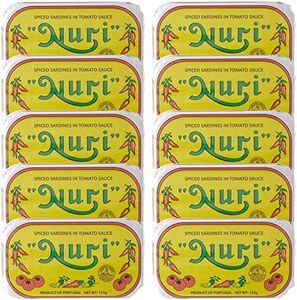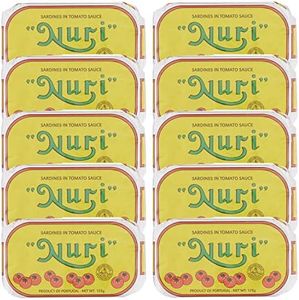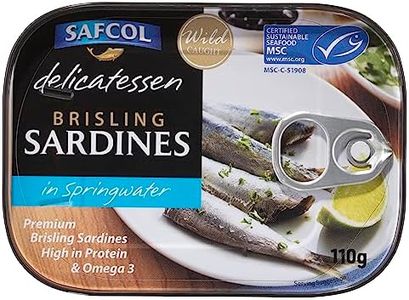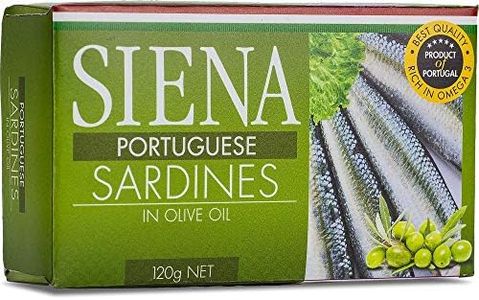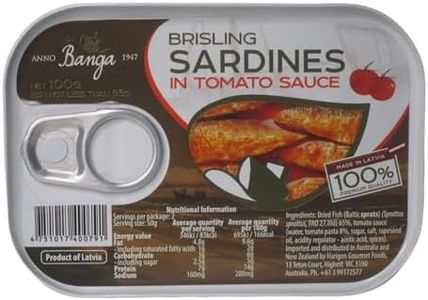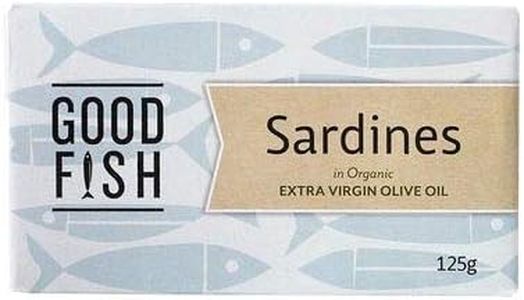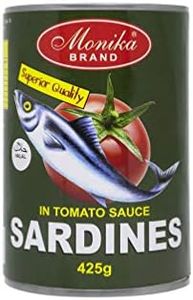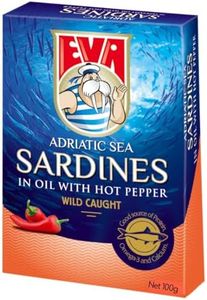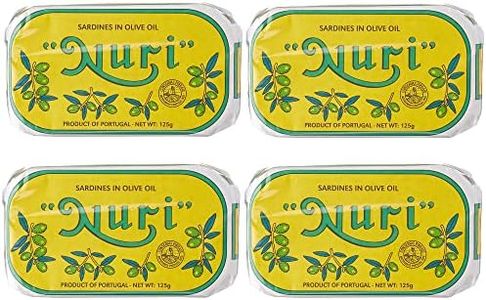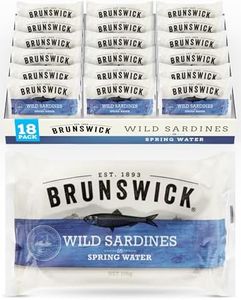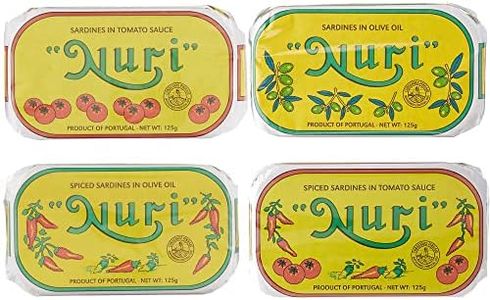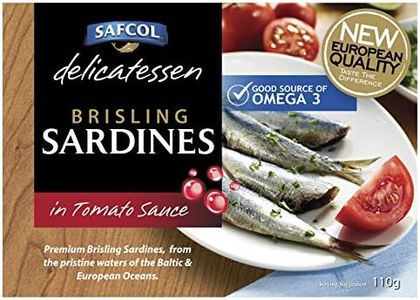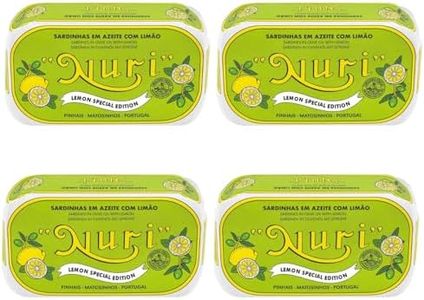We Use CookiesWe use cookies to enhance the security, performance,
functionality and for analytical and promotional activities. By continuing to browse this site you
are agreeing to our privacy policy
10 Best Canned Sardines
From leading brands and best sellers available on the web.Buying Guide for the Best Canned Sardines
Choosing canned sardines might seem straightforward, but there are several important factors to consider to find the best fit for your taste and dietary needs. Canned sardines can vary a lot in terms of flavor, texture, nutritional value, and convenience. By understanding the main characteristics, you’ll be able to make a selection that matches your preferences, whether you’re after a quick snack, a nutritious protein source, or a tasty addition to meals.Type of Liquid/Preserving MediumThe liquid or preserving medium in which sardines are canned is important because it affects the flavor, texture, and nutritional value of the fish. Common options include oil (such as olive, sunflower, or soybean), water, tomato sauce, mustard, or spicy sauces. Oil-packed sardines tend to be richer, more flavorful, and higher in calories, while water-packed ones are lighter and have less fat. Sauces add distinct flavors and can be good for spicing up simple dishes. When picking, think about how you plan to use the sardines—oil-packed for salads or snacks, water-packed if you're watching fat intake, or sauce-based for easy meal prep.
Sardine Size and TextureThe size and texture of canned sardines refer to whether they are small and tender or larger and firmer. Smaller sardines are often prized for their delicate texture and mild flavor, whereas larger ones can be meatier with a stronger taste. The choice here depends on your recipe and personal taste. If you’re eating them straight from the can or adding them to delicate dishes, look for smaller, tender sardines. If you prefer a more substantial bite or plan to cook with them, larger sardines might be a better fit.
Bones and SkinSome canned sardines are left with bones and skin, while others have them removed. Sardines with bones and skin are considered more nutritious because the bones provide extra calcium and the skin can add healthy fats and flavor. Removing them creates a smoother texture and appearance, which some people prefer. If you want maximum nutrition and don’t mind a bit of texture, opt for sardines with bones and skin. For a milder eating experience or to use in spreads, boneless and skinless options may be easier to work with.
Salt and AdditivesSalt and additives affect both taste and health. Some sardines are packed with high salt levels or added preservatives and flavorings. Low-sodium versions are available for those watching their salt intake. Check the ingredient list if you want to avoid unnecessary chemicals or flavor enhancers. If you have dietary restrictions or are aiming for a cleaner product, look for simple ingredient lists with just sardines, oil or water, and minimal seasoning.
Country of Origin and SourcingWhere the sardines are sourced and processed can make a difference in quality, taste, and sustainability. Some regions are known for producing sardines with specific textures or flavor profiles. Sustainable or responsibly sourced sardines are also better for the environment and can often be identified through certifications or by reading the label. If supporting sustainable fishing is important to you or you want to explore different regional flavors, consider the origin and sourcing when making your selection.


